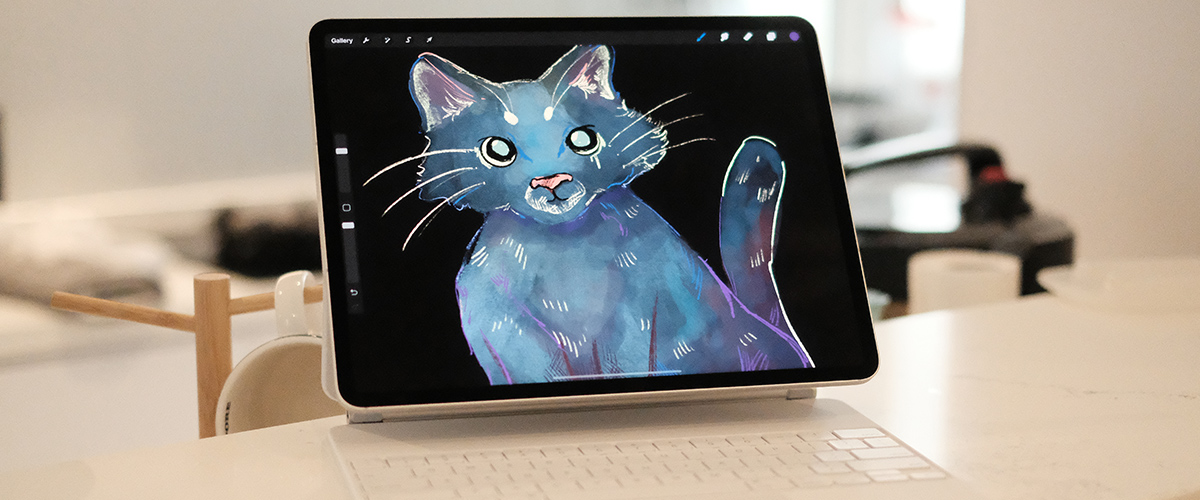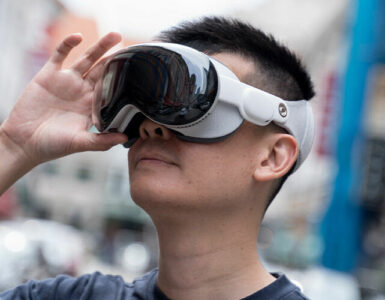The iPad Pro currently represents the best tablet range that Apple has to offer, but when Apple announced the all-new iPad Air last year, powered by Apple’s most advanced A14 Bionic chip, consumers were puzzled, since both the Air and Pro were seen as fighting for the same power-hungry audience.
Well, with the inclusion of Apple’s much-lauded M1 chip in the new Apple iPad Pro 12.9” model of 2021, there is no question which is the leader of its class. The Apple M1 chip has been transforming laptops and more recently, desktops, and now, it’s in a tablet, making the iPad Pro something that can hold its own against the MacBook Pro 13-inch.
But under all the talk about hardware specifications and powerful performance, the real reason why anyone should be getting this hefty tablet is for the display.
Packed within is what Apple currently markets as their Liquid Retina XDR Display, which, on paper, is a screen that offers a high dynamic range similar to the performance of their Apple Pro Display XDR. Well, the same three letters of the alphabet at least. This 2021 iPad Pro has around 2,500 local dimming zones, enabling a 1,000,000:1 contrast ratio and 1600 nits of peak brightness.

The result? Stunning visuals like you’ve never seen before, it’s hard to see it in the visuals below, but the level of blacks which the display is able to achieve is more commonly seen in large television displays many times the price of the iPad Pro 12.9”.
To put it into greater context, the display is even brighter than many 4K HDR TVs in the market right now. With the previous iPad Pro topping out at 600 nits, the 2021 model handily bests its predecessor. Even the 24-inch iMac which we reviewed most recently is only calibrated for 500 nits of brightness for what is mainly indoor use.
The tech behind this is not OLED but actually Mini-LEDs which are more commonly seen in high-end televisions. From what we observed from initial tests, these Mini-LEDs help the iPad create high degrees of contrast, whereby staring into the deep blacks achieved by the display might be darker than the devil’s soul, but we digress.
Apart from that, we’re also looking at a screen that is able to deliver a P3 wide color gamut and retina resolution of 5.59 million pixels.
Given the impressive nature of the display, it seems that the M1 chip and battery seem to be keeping up well so far. We’ve used the iPad mostly to check out HDR content on YouTube and also on Procreate, to understand how it fares compared to the iPad Air from 2020.
On the Procreate front, creators will be looking to get the most out of the superior 12.9” iPad Pro largely because of the implementation of the in built LiDAR scanner with the iPad. This allows them to create AR models within the app itself, and even paint the 3D models all with the use of the ever reliable Apple Pencil second generation.
Yep, same Apple Pencil returns and continues to magnetically attach itself to the top side of the tablet, for wireless charging. Delivering the same consistency when drawing on the iPad Air, there’s actually something slightly different with the responsiveness when using on the Liquid Retina XDR Display. In some ways, all the finer details while illustrating does seem a bit more apparent.

With all that power, the 12.9” iPad Pro seems to be keeping up the pace battery wise. And we probably have to thank the new M1 chip for that as well. More often than not, new feature upgrades especially for first gen products tend to be an area for concern. After an hour of YouTube browsing of HDR content, we were only able to knock down the battery by 5% on maximum brightness over WiFi. Apple claims that it would be able to hit 10 hours of web surfing over Wi-Fi. Given the impressive performance of the M1 Macbooks, we’re certain it might even surpass this claim.
Audio wise, the speakers perform admirably and the four audio ports re evenly distributed across the device’s large frame, providing substantial playback and while we wouldn’t recommend it as the primary speaker at a house party, it’s great to use in bed catching up on Netflix

One cool feature that Apple has implemented with the latest iPad Pro is Centre Stage and if you thought you’ve seen the very best of video conferencing in the past year, then you don’t know Apple. Making use of machine learning, the front facing 12 megapixel ultra-wide TrueDepth Camera is able to recognise users and keep them as the main focus in the shot, even if they are moving around. So if you are presenting between white boards or physical presentation slides in your room or office, you don’t have to worry about being in the frame as the camera can track your movements and focus on you.
As this is new, the only video conferencing software that taps this at the moment is FaceTime, though Apple is sharing the API with vendors to introduce it in their apps. While making a FaceTime call to another iPad, I started swivelling the iPad Pro around and Centre Stage does a brilliant job of keeping my face in view. And when your face starts moves towards the edges, Centre Stage AGGRESSIVELY corrects the camera so the user always stays in the spotlight. The only time anyone can throw off Centre Stage is to dart offscreen quickly.
With Centre Stage, there are invisible tethers keeping your head in the same spot which bungees back naturally as you move about, and we look forward to greater implementation and adoption for this via vlogging down the line.

Design wise, it looks the same as recent iPad models such as the iPad Air. The difference here is that it continues the same tradition as the previous iPad Pro as the 2021 iPad Pro uses Face Unlock as opposed to a fingerprint scanner. Depending on your needs, a fingerprint scanner might be the practical option in our mask wearing days.
The real downside is that the 12.9” iPad Pro is actually heft – the weight for a mobile device, as well as the price tag, and both are without any keyboard or cover accessories. Weighing in at 684g for the 5G model, the iPad Pro 12.9-inch measures 280.6mm and 214.9mm, and has a rather large footprint for a handheld device. Then again, a better comparison would be with the MacBook Pro 13-inch, powered by the M1 chip. That weighs 1.4kg and once you pack in Apple Magic Keyboard (S$519) and Apple Pencil (S$189), the iPad Pro comes in at 1.39kg, but has features a normal laptop does not.
Price-wise, the base model for the 12.9-inch Wi-Fi model starts from US$1,099/S$1,649 but for the quality, we are getting with the display and additional features not found on laptops, so it’s a well-deserved trade-off. We’re not even sure if getting the older iPad Pro even makes sense after test driving with the latest model.
GEEK REVIEW SCORE
Summary
Hands down this is the most stunning display we’ve ever seen on a display of this size. The iPad Pro 12.9″ brings all the glorious Mini-LED goodness from TV land and parks it square into something you can enjoy on the go. This device further blurs the line between a tablet and MacBook Pro, especially since both are now powered by the amazing M1 chip. Rather than selling you something similar though, the iPad Pro is in a class of its own and waiting for you to give it a shot.
Overall
9.2/10
-
Aesthetics - 9.2/10
9.2/10
-
Build Quality - 10/10
10/10
-
Performance - 9.2/10
9.2/10
-
Value - 7.5/10
7.5/10
-
Geek Satisfaction - 10/10
10/10













